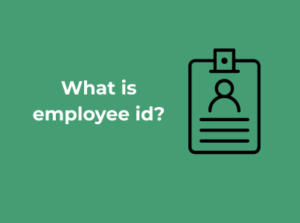Hello there! Let’s talk about financial data—a topic that might sound a bit dry at first but is absolutely essential to keep our personal and professional lives running smoothly. One key aspect of managing finances is identifying and addressing gaps in financial data.
Why is it so important? Let’s dive in and explore!
1. Accuracy is Everything
Think of your financial data as the foundation of a sturdy building. Even the smallest gap or missing piece—like an overlooked transaction or an unaccounted charge—can lead to inaccurate financial reporting. When you’re dealing with numbers, accuracy isn’t just preferable; it’s a necessity. Missing amounts can throw off budgets, cause reporting errors, and even prevent you from making informed decisions. After all, you wouldn’t want to base your next big financial move on incomplete (or incorrect!) information, right?
2. Avoiding Tax and Compliance Issues
We all know tax season can be stressful enough without the added headache of incomplete financial records. Missing amounts in your statements can lead to discrepancies in your tax filings, which could attract scrutiny from auditors or regulatory authorities. Staying on top of your financial transactions ensures that you’re in the clear for compliance and avoids unnecessary penalties or fines.
3. Building Trust in Personal and Business Relationships
If you’re running a business, incomplete financial data can affect more than just your books; it can harm relationships with clients, vendors, and even employees. Imagine missing a payment due to an overlooked amount in your ledger—yikes! Keeping your financial data complete and up-to-date ensures that everyone gets paid on time, keeps relationships strong, and adds a layer of professionalism to everything you do.
4. Spotting Potential Issues Early
One of the greatest benefits of identifying missing amounts is that it can help you spot bigger problems before they spiral out of control. For instance, a small unaccounted expense could hint at something larger, like fraudulent activity or oversights in budgeting. Acting quickly to address gaps allows you to safeguard your finances and maintain peace of mind.
5. Supporting Smart Decision-Making
Whether you’re planning to invest, expand your business, or even save for a personal goal, complete and accurate financial data is key to making sound decisions. When you identify and resolve missing amounts, you’re not just cleaning up your books—you’re giving yourself the clarity and confidence to chart your path forward. To unify and transform that financial data into consistent, actionable insights, you can turn to Azure ETL software to support smarter forecasting, risk analysis, and regulatory reporting.
Best Practices to Keep Track of Invoices and Payments: Read More
Recognizing Common Scenarios Where Amounts Go Missing
Let’s talk about those mystery moments in accounting where numbers just seem to vanish, shall we? It happens to the best of us. One moment, everything is matching beautifully, and the next—poof!—a crucial figure is nowhere to be found. But don’t panic. The key to solving these riddles is understanding where, how, and why amounts tend to go missing in the first place. Let’s break it down while keeping things light and approachable, shall we?
1. Human Error – The Usual Suspect
Let’s face it: we’re all human, and humans make mistakes. Missing amounts often originate from simple slip-ups like:
- Forgetting to record a transaction (yes, even the small ones count!).
- Recording a value in the wrong column or on the wrong side of the ledger.
- Transposing numbers. For instance, entering $56 instead of $65—classic case of fat-finger syndrome!
These errors are by far the most common culprits and a gentle reminder that double-checking your work is always worth the time.
2. Miscommunication Between Teams
Working closely with your team or department? That’s great! But, when communication isn’t clear, missing amounts can sneak in. Here’s how:
- An invoice that wasn’t forwarded to accounting in time.
- Emails with financial details buried somewhere in a long thread—easily overlooked.
- Departments tracking the same data differently, resulting in gaps when consolidating information.
It’s not about pointing fingers; it’s about creating better communication channels and processes to prevent these situations altogether.
3. System Errors or Glitches
In the digital age, we rely heavily on accounting software and financial tools. But they’re not immune to hiccups. Missing amounts often occur due to:
- Data failing to sync between software platforms.
- Outdated systems not saving or processing entries correctly.
- Accidental deletion of data during software transfers or upgrades.
Regular system audits and backups can be life-savers when technology decides to, well, misbehave.
4. Timing Differences – The Sneaky Delay
Timing issues frequently masquerade as missing amounts when they’re really just delayed entries or misunderstood timing. Some common examples include:
- Bank transactions that haven’t cleared yet.
- Checks that were written but haven’t been cashed.
- Invoices sent in one reporting period but recorded in another.
It’s all about understanding the flow of cash and recognizing patterns in your financial timing.
5. Fraud or Intentional Omissions
Though less common, missing amounts can also signal something sinister. Fraud or deliberate omissions might include:
- Unreported revenues or expenses.
- Altered records to hide discrepancies or theft.
- Conflict of interest in tracking or reporting numbers.
If you suspect intentional foul play, it’s best to escalate the matter to a professional auditor immediately for a thorough review.
Simple Math Techniques That Help Pinpoint Errors
Numbers don’t lie—most of the time! But when things don’t add up, literally, it’s time to roll up your sleeves and lean on simple math techniques to uncover discrepancies. Spotting missing amounts doesn’t always require advanced tools or accounting software. With just a few calculations and a bit of logic, you can identify and resolve errors lurking in your financial data confidently. Let’s dive into some easy yet effective techniques that can save the day.
The Power of the Trial Balance
One of your first steps should be verifying if your debits and credits in the ledger match—this is called the trial balance. If they don’t match, you already know something is off. Start by subtracting the total of one column from the other to see the exact difference. This number can often be a clue in itself. For example, if the difference is divisible by 9, you may have transposed two digits in an entry. Simple adjustments like this can quickly pinpoint where attention is needed without deep diving into every entry.
Use the Budget vs. Actual Comparison
Another helpful technique is comparing actual data against a budget forecast or expected outcomes. If you know what the numbers should look like, it becomes much easier to identify what’s amiss. Are certain expense categories unusually low or high? Does revenue not match what was expected in a given period? This allows you to narrow down the specific areas that might be contributing to the missing amounts, helping you avoid combing through unrelated data.
Break the Problem into Smaller Chunks
When you’re overwhelmed by large sets of numbers, break them into smaller, manageable parts. For instance, if monthly totals aren’t reconciling, try checking the weekly or even daily totals. Often, errors that might blend into larger sums can stand out when you focus on smaller intervals.
Double-Check Percentages and Ratios
Ratios and percentages can serve as sanity checks for missing amounts. Look at percentage splits in areas like overhead costs, profit margins, or expense categories. If the results seem off from historical trends or benchmarks, you’ve likely uncovered a potential discrepancy. A quick recalculation using basic formulas (e.g., net profit = revenue – expenses) can point out where mistakes lie.
Create a Simple Reconciliation Table
Create a basic table to spot-check your figures. For example, start with the opening balance, add deposits, subtract withdrawals, and compare that to your closing balance. If these numbers don’t align, the missing amount is likely tied to one of these steps. Breaking the flow into a sequence of logical steps minimizes frustration and organizes your thought process.
Using Tools and Software to Simplify Missing Amount Calculations
Let’s face it — figuring out missing amounts in your financial data can feel like searching for a needle in a haystack. But here’s the thing: you don’t have to do it all by hand anymore. The right tools and software can make a world of difference, saving you time, reducing stress, and preventing costly errors. Ready to simplify those calculations? Let’s dive in!
Why Use Tools for Missing Amounts?
Trying to track calculations manually is fine… until it’s not. As your numbers grow, so does the chance of human error. A miscalculated formula, forgetting to update a figure, or missing a trend in your ledger can set off a chain reaction of mistakes. Financial tools, on the other hand, are designed to handle these tasks efficiently and accurately. They can automate reconciliations, highlight discrepancies, and even integrate with your existing systems to give you a clearer picture of your finances.
Top Types of Tools That Can Help
Wondering what kind of tools you should be looking at? Here’s a breakdown to get you started:
- Spreadsheets with Built-in Formulas: Programs like Microsoft Excel or Google Sheets come with ready-made formulas like
=SUM()or=IFERROR()that can point out when something’s off. - Accounting Software: Tools like QuickBooks, Xero, and FreshBooks feature built-in checks that flag inconsistencies in your financial records, making it easier to locate missing or mismatched amounts.
- Bank Reconciliation Apps: Using applications like CashFlowTool or YNAB (You Need A Budget), you can automatically match bank transactions to your financial ledgers. They often alert you if a transaction doesn’t add up.
- Audit and Error Detecting Tools: Platforms such as BlackLine or ReconArt are designed specifically for identifying errors and gaps in data. If your company handles large volumes of transactions, these tools are worth exploring.
Features to Look For
When choosing a tool, it’s important to focus on the features that will make your life easier. Here are the must-haves:
- Integration: Make sure the tool can easily sync with your bookkeeping or accounting system.
- Automation: A good tool should automate as much as possible—logging transactions, reconciling accounts, and flagging errors.
- Custom Reporting: The ability to generate tailored reports makes it easier to pinpoint which specific accounts or transactions are incomplete.
- User-Friendliness: Look for a clean, intuitive interface—nobody wants to spend hours trying to learn how to use the software.
How These Tools Save You Time (and Sanity!)
Just picture this: instead of painstakingly combing through numbers row by row, the software scans everything for you in seconds. It not only finds where amounts don’t add up but often suggests where to make corrections. Plus, with audit trails and accurate records, you’re protected if anyone ever questions your results.
Clues Your Financial Ledger Might Be Telling You
Ah, the financial ledger—a seemingly humble document, but one that tells stories of transactions, activities, and the occasional mystery. If you’ve ever wrestled with missing amounts and discrepancies in your numbers, you might not be listening closely enough. Your ledger is like a chatty friend dropping subtle (or sometimes not-so-subtle) clues. Here are insights into what your financial ledger might be trying to tell you—and how you can decode its language to improve your accounting accuracy.
1. Patterns in the Numbers
First things first, numbers love patterns. Go back through your ledger and look for recurring figures, especially in income, expenses, or payments. For instance, if a monthly invoice is always $1,200 except for one instance where it’s $1,020, that might point to an incomplete payment or misunderstanding. Sometimes a single number, even if it’s close, breaks the rhythm. Catching these clues requires paying attention to trends over time.
2. The Case of Mysterious Round Numbers
Ever notice a suspicious number that’s curiously neat, like $500 or $1,000? While round numbers seem harmless, they can often be placeholders or estimates rather than exact amounts. Your ledger might be suggesting, “Hey, you inputted a placeholder here. Are you sure this represents the actual figure?” Scrutinize these entries carefully; they are prime suspects for missing or questionable amounts.
3. Gaps in Time
Your ledger can also highlight potential missing amounts based on time gaps. Let’s say you record payroll every two weeks, but there’s no entry for one payroll cycle. This time gap is a clue—it’s the ledger’s way of highlighting a potential oversight. By cross-referencing your calendar with the timing of entries, you can identify where missing amounts might be lurking.
4. Mismatched Creditor and Debtor Balances
One of the sneakiest ways your ledger reveals missing amounts is through imbalances. For example, if you’re meant to pay a vendor $6,000 but your ledger shows you’ve paid only $4,000, there’s a clear discrepancy. Ledgers often act as alarm systems for mismatched numbers between accounts payable and accounts receivable. Pay close attention to accounts that don’t “zero out” when they should.
5. Notes and Descriptions Speak Volumes
If your ledger includes a notes or description section, it’s worth giving these areas more than a passing glance. Vague or incomplete notes like “Miscellaneous Expense” or “Payment Adjustment” can obscure the real picture. These sorts of line items call for further investigation to ensure they don’t hide missing (or improperly recorded) amounts. Your ledger may not shout, but these sections quietly signal areas that warrant a closer look.
6. Digit-Related Typos
You’d be surprised by how much a single digit can throw things out of balance. Mistakes like transposing numbers (e.g., $3,210 instead of $3,120) or dropping a digit entirely ($200 instead of $2,000) are not uncommon. If your ledger’s totals don’t match expectations, double-check entries for digits that seem “off.” It may be trying to tell you it’s been a victim of accidental human error.
Real-World Examples to Build Confidence in Filling the Blanks
Let’s face it: dealing with missing amounts in financial data can feel like piecing together a puzzle where you’re not sure if you’ve got all the pieces—or worse, whether some pieces even exist. But don’t worry! By looking at some real-world examples, you’ll not only build confidence in handling these situations but also develop a sharper eye for spotting discrepancies and resolving them effectively. Ready to jump in?
Example 1: The Case of the Missing Expense
Imagine you’re reviewing the monthly expense report for your business, but the numbers just don’t sit right. The total expenses recorded are $15,000, but your bank statement indicates $15,600. Where’s that $600? Don’t panic. Start by cross-referencing individual transactions from your expense log with your bank statement. Often, an entry might have been accidentally skipped—perhaps that last-minute office supply purchase didn’t make it into the system.
Breaking it down into smaller, manageable chunks, like reconciling week by week, can reveal discrepancies quicker. Remember, no matter how small the gap, it affects your bottom line, and catching these errors ensures your books are reliable.
Example 2: Unearthing Revenue Overlooked
Here’s a brighter scenario—missing revenue. Let’s say your sales ledger shows $22,000 for the month, but your incoming payment report totals $23,500. Where’s that extra $1,500 coming from? This is a great time to review deposits carefully. Perhaps they include a payment that was recorded in a prior period but only cleared this month. Or maybe you forgot to log a customer paying an overdue invoice from last quarter.
The lesson here is simple: keep track of your accounts receivable and note payment timings carefully. Tools like spreadsheets or financial software can help, but diligence and manual review are still essential.
Example 3: Sorting Out Payroll Puzzles
Payroll is another area prone to discrepancies. You might find that your total reported wages are $8,500, but when employee paystubs are reviewed, adjustments for overtime or bonuses weren’t included properly. Let’s break it down systematically:
- Total wages paid
- Overtime hours logged and calculated
- Deductions applied (taxes, benefits, etc.)
By checking each component against the final total, you can spot where the misstep happened. Bonus tip: Always double-check payroll calculations, as they not only affect your books but also employee trust and satisfaction.
Why Examples Matter: Building Confidence
So, what’s the takeaway from these examples? Real-world problems don’t have to be overwhelming. Missing amounts typically follow patterns—perhaps they’re related to human errors, overlooked transactions, or system glitches. Pinpointing the issue is less about complex mathematics and more about paying attention to details and methodically ruling out possibilities.






